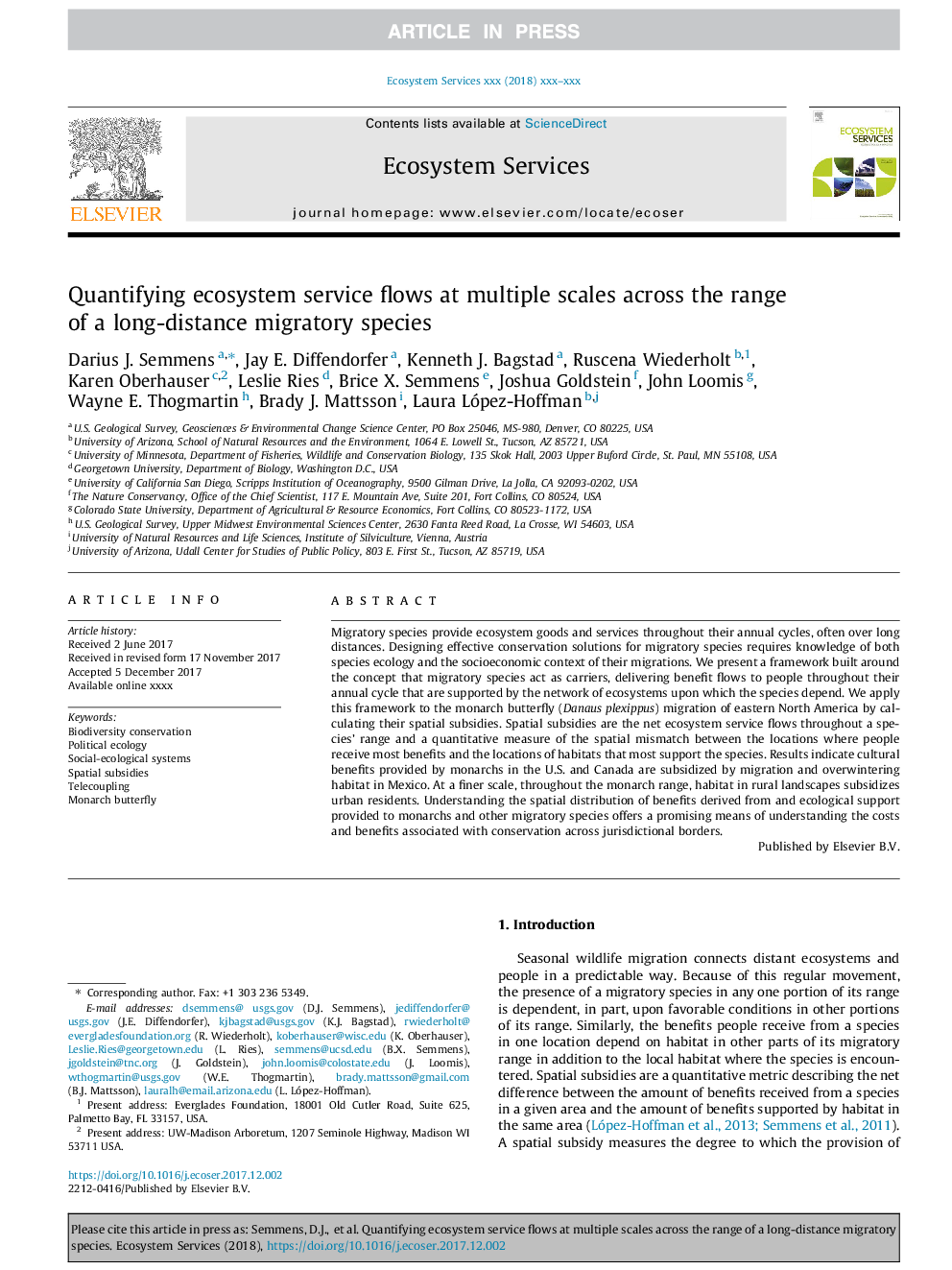| Article ID | Journal | Published Year | Pages | File Type |
|---|---|---|---|---|
| 6556292 | Ecosystem Services | 2018 | 10 Pages |
Abstract
Migratory species provide ecosystem goods and services throughout their annual cycles, often over long distances. Designing effective conservation solutions for migratory species requires knowledge of both species ecology and the socioeconomic context of their migrations. We present a framework built around the concept that migratory species act as carriers, delivering benefit flows to people throughout their annual cycle that are supported by the network of ecosystems upon which the species depend. We apply this framework to the monarch butterfly (Danaus plexippus) migration of eastern North America by calculating their spatial subsidies. Spatial subsidies are the net ecosystem service flows throughout a species' range and a quantitative measure of the spatial mismatch between the locations where people receive most benefits and the locations of habitats that most support the species. Results indicate cultural benefits provided by monarchs in the U.S. and Canada are subsidized by migration and overwintering habitat in Mexico. At a finer scale, throughout the monarch range, habitat in rural landscapes subsidizes urban residents. Understanding the spatial distribution of benefits derived from and ecological support provided to monarchs and other migratory species offers a promising means of understanding the costs and benefits associated with conservation across jurisdictional borders.
Keywords
Related Topics
Life Sciences
Agricultural and Biological Sciences
Agricultural and Biological Sciences (General)
Authors
Darius J. Semmens, Jay E. Diffendorfer, Kenneth J. Bagstad, Ruscena Wiederholt, Karen Oberhauser, Leslie Ries, Brice X. Semmens, Joshua Goldstein, John Loomis, Wayne E. Thogmartin, Brady J. Mattsson, Laura López-Hoffman,
